|
|
|
Sort Order |
|
|
|
Items / Page
|
|
|
|
|
|
|
| Srl | Item |
| 1 |
ID:
130748
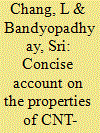

|
|
|
|
|
| Publication |
2014.
|
| Summary/Abstract |
Recently it has been reported in the technical literature that carbon nanotubes (CNTs) have distinct effects on thermal, mechanical and electric properties of epoxy resins. Compared to single-walled nanotubes (SWCNT), multiwalled nanotubes (MWCNT) apparently show greater improvements. The maximum aspect ratio (L/D) of CNT is reportedly as high as 138,000,000. In addition, the carbon nanotubes when treated with surface modifier to generate functional groups on their surface can afford to provide better improvement of the properties of the epoxy based CNT-particulate composite system. There are a number of factors that can influence the properties of epoxy-CNT systems. This paper examined the technical contents from selective references and made an attempt to highlight the general understanding of the properties and performance of epoxy - CNT particulate composite systems
|
|
|
|
|
|
|
|
|
|
|
|
|
|
|
|
| 2 |
ID:
130739
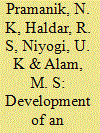

|
|
|
|
|
| Publication |
2014.
|
| Summary/Abstract |
When Nylon 66 was irradiated by an optimum dose of e-beam in presence of polyurethane as impact modifierin combination with triallyl is ocyanurate as cross-linker, a superior performance was observed for the irradiated nylon 66. Significant improvement of properties, such as hardness, tensile strength, flexural modulus and impact strength was obtained on radiation processing of nylon 66 by e-beam. More interestingly, percent water absorptionof such irradiated nylon 66 was reduced substantially. Improvement of mechanical properties and reduction of water absorption of irradiated nylon 66 were due to the cross-linking of the polymer system. Increase of cross-linkingwith dose of e-beam was verified by the increased gel content at higher doses. Irradiated nylon 66 showed betterdimensional stability than those achieved with pristine nylon 66. The increase in dimensional stability may beattributed to reduction in crystallinity with increasing dose of e-beam as revealed by DSC studies.
|
|
|
|
|
|
|
|
|
|
|
|
|
|
|
|
| 3 |
ID:
130733
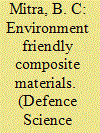

|
|
|
|
|
| Publication |
2014.
|
| Summary/Abstract |
Biocomposites can supplement and eventually replace petroleum-based composite materials in several applications. Several critical issues related to bio-fiber surface treatments is to make it a more suitable matrix for composite application and promising techniques need to be solved to design biocomposite of interest. The main motivation for developing biocomposites has been and still is to create a new generation of fiber reinforced plastics material competitive with glass fiber reinforced ones which are environmentally compatible in terms of products, use and renewal. There is an immense opportunity in developing new biobased products, but the real challenge isto design suitable bio-based products through innovation ideas. Green materials are the wave of the future. Bio nano composites have very strong future prospects, though the present low level of production, some deficiency in technology and high cost restrict them from a wide range of applications.
|
|
|
|
|
|
|
|
|
|
|
|
|
|
|
|
| 4 |
ID:
130743


|
|
|
|
|
| Publication |
2014.
|
| Summary/Abstract |
In this paper, we report the embedment of Cobalt (Co) nanoparticles by ion beam sputtering (IBS) in poly(vinylalcohol) (PVA) substrate to prepare nano composite film. The Co film of 5 nm was deposited on PVA by IBStechnique. Formation of Nano crystalline Co with HCP phase is revealed in GIXRD pattern of the film which alsoindicates that there is no change in the crystalline structure of PVA even after sputtering of the metallic nanoparticles.The average particle size of Co nanoparticles as evaluated using Scherer formula is found to be about 2 nm. UVVisabsorption spectrum of the film showed SPR peaks of Co metal in their nano size level embedded in the PVAmatrix system. XPS study confirms the metallic nature of Co MOKE studies show that the nanocomposite film isferromagnetic with HcÐÐ of. 42.8 Oe.
|
|
|
|
|
|
|
|
|
|
|
|
|
|
|
|
| 5 |
ID:
096421
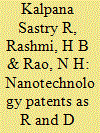

|
|
|
| 6 |
ID:
096422
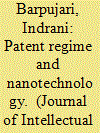

|
|
|
| 7 |
ID:
130750


|
|
Quantitative analysis of curing mechanisms of epoxy resin by mi
/ Cholake, Sagar T; Mada, Mykanth R; Raman, R.K. Singh; Bai, Yu, Zhao, Xl, Rizkalla, Sami, Bandyopadhyay, Sri
|

|
|
|
|
| Publication |
2014.
|
| Summary/Abstract |
This article informs the essence of major work done by a number of researchers on the analysis of two-step curing mechanism of diglycidyl ether of bisphenol A (DGEBA) epoxy resin in presence of amine curing agents using near- and mid-IR technology. Various peaks used as a marker for resin formation are discussed and their implementation is comprehensively studied. In addition to this, a wide range of information about the importance of reference peaks in both near-IR (NIR) and mid-IR (MIR) regions are congregated and their accuracy is audited. Also discrepancies observed by researchers in epoxy conversion (?) in NIR and MIR regions are reviewed to highlight the comparative advantages of both regions, one over the other.
|
|
|
|
|
|
|
|
|
|
|
|
|
|
|
|
| 8 |
ID:
130746


|
|
|
|
|
| Publication |
2014.
|
| Summary/Abstract |
It is believed that addition of small amount of nanoclays in the neat epoxy and fiber reinforced epoxy composite system can improve the mechanical properties. The mechanical properties of most of polymer matrix composites are sensitive to testing rate. However, most of the researches were concentrated on the behavior of the polymer
matrix composites at high strain rates. The present research work is to investigate the role of clay on neat epoxy and glass-fiber reinforced epoxy composites, at low strain rates. The clay in terms of 1.5 wt%, 3 wt%, and 5 wt% are dispersed in the epoxy resin using mechanical stirring followed by sonication process. The corresponding glass/epoxy nanocomposites are prepared by impregnating the clay epoxy mixture by hand lay-up process. Characterization of the nanoclay is done by X-ray diffraction and Scanning Electron Microscopy. Tensile stress-strain curves are obtained at strain rates of 10-4 s-1, 10-3 s-1, 10-2 s-1, and 10-1 s-1 by a hydraulic machine reporting that, even at low strain rates, the longitudinal strength and stiffness increase as strain rate increases for all clay loadings. It is observed that the tensile modulus increases as the clay loading increases for both epoxy and glass/epoxy nanocomposites. It is also noticed that the longitudinal tensile strength decreases as the clay loading increases. The failed specimens show marked changes in the fracture surface with increased strain rate. Scanning electron microscopy is used to study the fiber/matrix/clay adhesion in fracture surfaces.
|
|
|
|
|
|
|
|
|
|
|
|
|
|
|
|
|
|
|
|
|